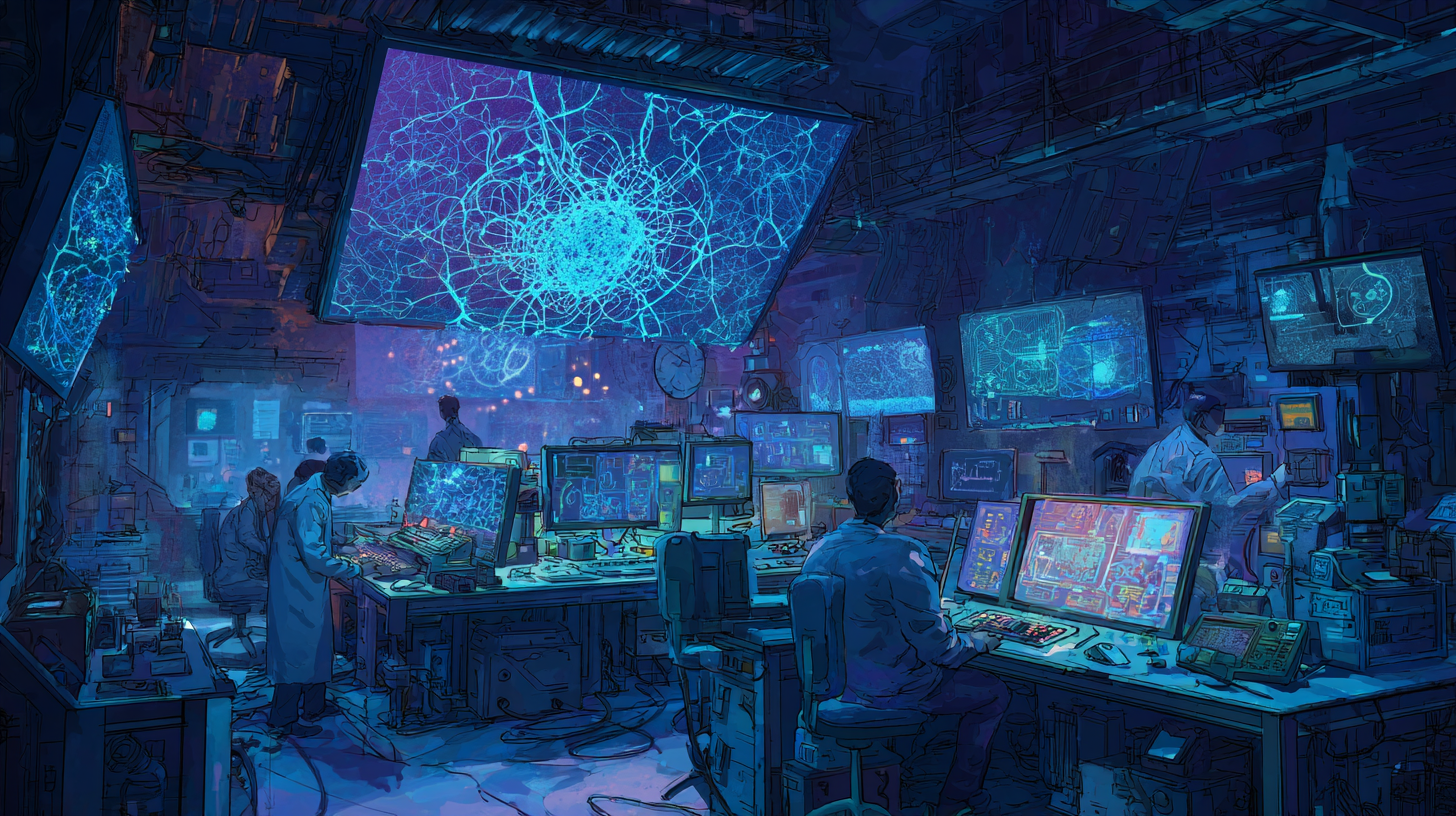The 1980s marked the beginning of AI's transformation from laboratory curiosity to practical technology that would reshape entire industries. After the sobering lessons of the AI Winter, researchers adopted more focused approaches, developing expert systems that encoded human knowledge and neural networks that could learn from data.
1980s: Neural Network Renaissance
Neocognitron (1980): Kunihiko Fukushima's self-organizing neural network inspired by Hubel and Wiesel's cat visual cortex studies. Introduced convolutional layers (S-cells) for feature extraction and pooling layers (C-cells) for position invariance. Architecture: alternating S and C layers with decreasing resolution and increasing features. Could recognize handwritten digits despite shifts, rotations, and deformations. Direct precursor to modern CNNs, though trained layer-by-layer without backpropagation.
Hopfield Networks (1982): John Hopfield showed neural networks could work as associative memory using energy functions. Network converges to stored patterns, demonstrating content-addressable memory. Energy function: E = -½ΣΣwij×si×sj where states minimize energy. Applications in optimization problems (traveling salesman) and pattern completion.
Backpropagation Popularized (1986): David Rumelhart, Geoffrey Hinton, Ronald Williams published "Learning representations by back-propagating errors" in Nature. Though algorithm existed earlier (Werbos 1974, Parker 1985), this paper made it widely understood. Key insight: chain rule computes gradients through multiple layers efficiently. Enabled training deep networks, solving XOR problem that stumped perceptrons. Revived neural network research after AI Winter.
Connectionism Movement (1986): "Parallel Distributed Processing" volumes by Rumelhart, McClelland, and PDP Group proposed mind as parallel processing of distributed representations. Challenged symbolic AI paradigm, emphasizing learning over programming and subsymbolic over symbolic processing.
1990s: Statistical Methods and Practical Applications
TD-Gammon (1992): Gerald Tesauro's backgammon program using temporal difference reinforcement learning and neural networks. Achieved world-champion level through self-play without human knowledge. Demonstrated power of reinforcement learning in complex domains.
Support Vector Machines Practical (1995): Corinna Cortes and Vladimir Vapnik made SVMs practical with soft-margin classifier and kernel trick. Dominated machine learning before deep learning, providing theoretical guarantees and working well with limited data.
Deep Blue Victory (May 11, 1997): IBM's chess computer defeated world champion Garry Kasparov 3.5-2.5 in six-game match in New York. Hardware: 30-node RS/6000 cluster with 480 custom VLSI chess chips, evaluating 200 million positions/second. Software: extensive opening book, endgame database, sophisticated evaluation function tuned by grandmasters. Significance: First defeat of reigning world champion under tournament conditions, demonstrating brute-force search could achieve grandmaster-level play. Kasparov accused IBM of cheating (unfounded), match watched by millions worldwide.
LSTM Networks (1997): Sepp Hochreiter and Jürgen Schmidhuber solved vanishing gradient problem with Long Short-Term Memory. Architecture included memory cells, input/output/forget gates enabling learning long-term dependencies. Became dominant architecture for sequential data until Transformers.
2000s: Big Data and Statistical Learning
Random Forests (2001): Leo Breiman combined bagging with random feature selection in decision trees. Each tree trained on bootstrap sample with random subset of features at each split. Reduced overfitting while maintaining interpretability. Became one of most successful classical ML algorithms.
Conditional Random Fields (2001): John Lafferty, Andrew McCallum, Fernando Pereira created discriminative models for sequential labeling. Superior to HMMs for many NLP tasks, becoming standard for named entity recognition and part-of-speech tagging.
Deep Belief Networks (2006): Geoffrey Hinton's "A fast learning algorithm for deep belief nets" showed deep networks could be trained using layer-wise unsupervised pre-training with Restricted Boltzmann Machines followed by fine-tuning. Breakthrough that ended second AI Winter and launched deep learning revolution.
ImageNet Creation (2007-2009): Fei-Fei Li and team at Princeton/Stanford created massive visual dataset. 14,197,122 images across 21,841 categories, organized according to WordNet hierarchy. Annual ImageNet Large Scale Visual Recognition Challenge (ILSVRC) starting 2010 with 1,000 categories. Enabled training and benchmarking deep learning models, demonstrating importance of large-scale data.
Google Brain Project (2011): Founded by Andrew Ng and Jeff Dean with Greg Corrado. Built distributed system for training massive neural networks. Famous "cat neuron" experiment: unsupervised learning on YouTube videos discovered cat detectors without labels. Demonstrated deep learning at scale, leading to Google's AI transformation.
2012: The Deep Learning Breakthrough
AlexNet Revolution: Alex Krizhevsky, Ilya Sutskever, Geoffrey Hinton won ImageNet 2012 with 15.3% top-5 error (vs 26.2% runner-up). Architecture: 8 layers (5 convolutional, 3 fully connected), 60 million parameters, ReLU activation functions (faster than sigmoid), dropout for regularization, data augmentation, and GPU training (two GTX 580 GPUs). Trained for 6 days using SGD with momentum. This 10.8% improvement shocked computer vision community, demonstrating deep learning superiority and launching the modern AI revolution. Every major tech company started deep learning research.
2013-2017: Deep Learning Dominance
Word2Vec (2013): Tomas Mikolov's efficient word embeddings using skip-gram and CBOW models. Showed semantic relationships captured in vector space (king - man + woman = queen). Revolutionized NLP by providing dense word representations.
Generative Adversarial Networks (2014): Ian Goodfellow invented GANs after inspiration at a Montreal bar. Two networks compete: generator creates fake data, discriminator distinguishes real from fake. Enabled realistic image generation, style transfer, and creative AI applications.
ResNet (2015): Kaiming He's Residual Networks won ImageNet with 152 layers using skip connections to solve vanishing gradient. Error rate 3.57%, surpassing human performance. Showed very deep networks were trainable.
AlphaGo Triumph (March 2016): DeepMind's Go program defeated Lee Sedol 4-1 in Seoul. Combined deep neural networks (policy and value networks) with Monte Carlo tree search. Trained on 160,000 expert games then self-play reinforcement learning. Move 37 in game 2 called "divine" by commentators. Watched by 280 million people, demonstrating AI mastery of intuitive strategy game.
Transformer Architecture (June 2017): "Attention Is All You Need" by Vaswani et al. at Google. Replaced recurrence with self-attention mechanism: Attention(Q,K,V) = softmax(QK^T/√d)V. Multi-head attention, positional encodings, layer normalization. Enabled parallelization and longer context understanding. Became foundation for all modern language models (BERT, GPT, T5).
